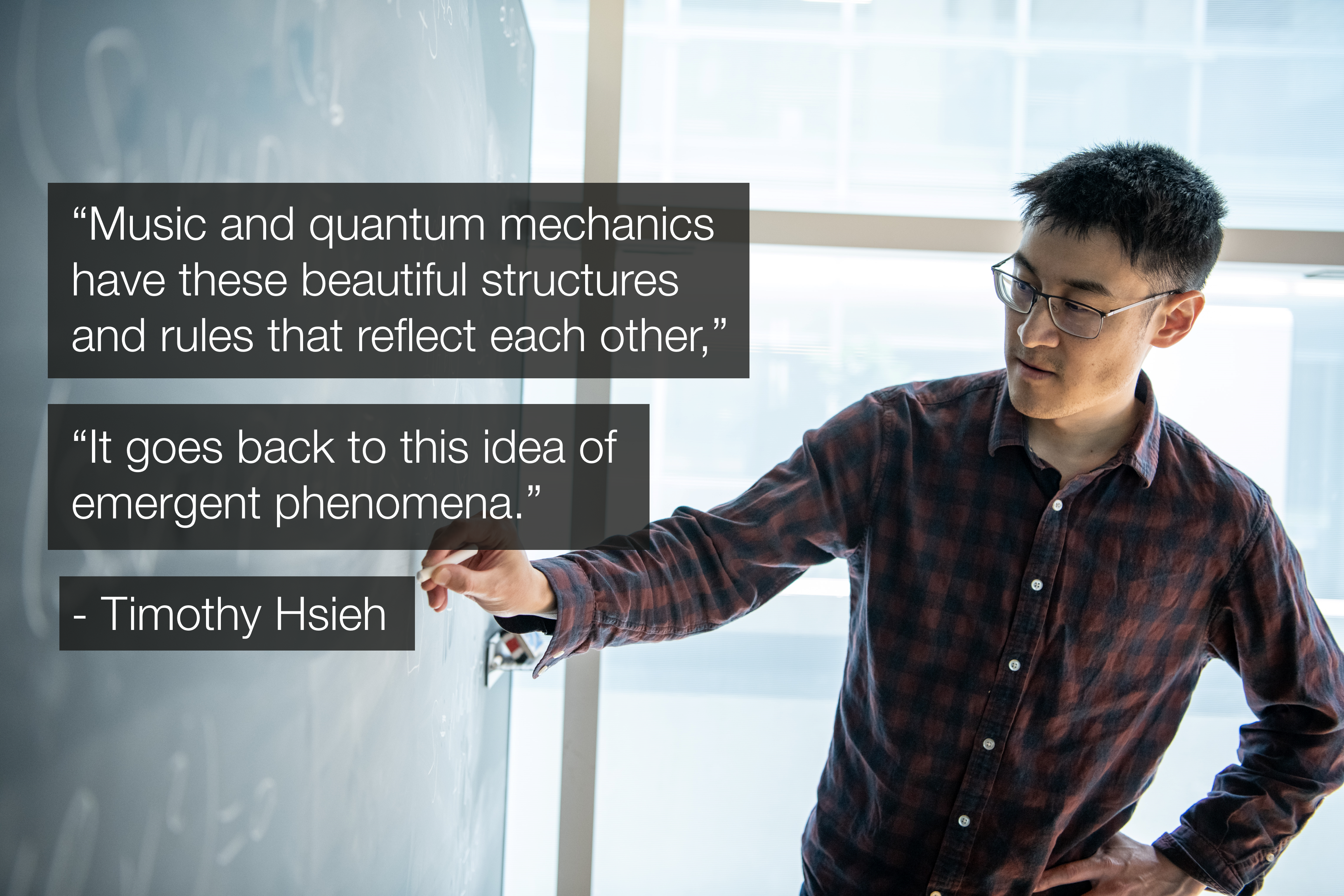Timothy Hsieh loved playing with LEGO sets as a child. He threw away the instruction manuals.
He loved the freedom and the creativity of putting the different pieces together in various combinations, just to see what unique shapes might emerge.
He’s still doing that, in a sense, but the building blocks he now tinkers with as a physicist are much smaller than LEGO blocks.
“I am most interested in what happens when you have many quantum degrees of freedom in particles that are interacting with each other,” says Hsieh. “What type of new phenomenon can arise from such a big system?”
Much of science is reductionist. It tries to understand nature by breaking down matter into the smaller constituents of electrons, protons, neutrons, and other elementary building blocks of nature.
But Hsieh prefers a different approach, looking at the bigger picture of how those building blocks, when combined, result in something new, and sometimes surprising. This is known as emergence — the concept of the whole being greater than the sum of its parts. Think of how musical harmony emerges when multiple instruments play the right notes together (something Hsieh, an accomplished violinist, understands well).
One of Hsieh’s research goals is to discover interesting emergent properties in quantum matter that may be useful to the advancement of quantum computing.
Most of the quantum computations that have been done so far involve specific types of operations that can be simulated on our existing computers. But the goal is to achieve quantum computations that are much more versatile and well beyond the scope of current computers. This quest, for a “universal quantum computer,” is global.
To make this upgrade to universal quantum computing, Hsieh relies on some quantum magic. Far from hocus pocus, quantum magic is a well-defined term in Hsieh’s field that refers to a specific set of quantum superpositions.
“What my collaborators and I found is that magic is guaranteed to exist in certain topological phases of matter— quantum matter whose properties are robust against small imperfections, like how a donut is still a donut if you take a small bite. Remarkably, what makes the phases of matter topological are also responsible for making the phases magical,” he says.
As an early-career researcher, Hsieh, who is now director of Perimeter Institute’s Clay Riddell Centre for Quantum Matter was drawn to the institute’s multi-disciplinary environment, where he can collaborate with researchers in related (or seemingly unrelated) fields like strong gravity and quantum foundations.
Like assembling LEGO blocks as a child – or playing violin in an orchestra – Hsieh finds fulfilment in the incredible new things that emerge when you bring together brilliant people to tackle big challenges.
“Music and quantum mechanics have these beautiful structures and rules and that reflect each other,” he says. “It goes back to this idea of emergent phenomena.”
Curious about Perimeter’s researchers or the advances in theoretical physics that are happening now? Stay in the know with our monthly newsletter, or watch this space for new researcher profiles and science highlights
About PI
Perimeter Institute is the world’s largest research hub devoted to theoretical physics. The independent Institute was founded in 1999 to foster breakthroughs in the fundamental understanding of our universe, from the smallest particles to the entire cosmos. Research at Perimeter is motivated by the understanding that fundamental science advances human knowledge and catalyzes innovation, and that today’s theoretical physics is tomorrow’s technology. Located in the Region of Waterloo, the not-for-profit Institute is a unique public-private endeavour, including the Governments of Ontario and Canada, that enables cutting-edge research, trains the next generation of scientific pioneers, and shares the power of physics through award-winning educational outreach and public engagement.
You might be interested in




